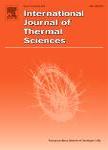版权所有:内蒙古大学图书馆 技术提供:维普资讯• 智图
内蒙古自治区呼和浩特市赛罕区大学西街235号 邮编: 010021

作者机构:State Key Laboratory of Extreme Environment Optoelectronic Dynamic Measurement Technology and Instrument North University of China Taiyuan 030051 China Institute for Electronics and Information Technology in Tianjin Tsinghua University Tianjin 300300 China Department of Chemical Engineering National Tsing Hua University Hsinchu 300044 Taiwan Institute of Process Equipment and Control Engineering Zhejiang University of Technology Hangzhou 310023 China
出 版 物:《International Journal of Thermal Sciences》
年 卷 期:2025年第217卷
摘 要:Infrared thermography (IRT) is widely used for non-destructive measurement and testing of composite materials and heritage conservation. Thermal data post-processing techniques playing a crucial role in improving accuracy and efficiency. In this work, a self-guided filtering-based slow feature thermography (GF-SFT) method is proposed for subsurface defect assessment of composites. It processes and analyzes time-series thermal imaging data of inspection targets from both temporal and spatial dimensions. First, a self-guided filtering method enhances the thermal image sequence in the spatial domain, preserving critical image features (e.g., edges) while reducing noise and suppressing irrelevant details, thereby improving the data quality. Subsequently, the slow feature analysis technique isolates stable background components in the thermal signal over time while distinguishing rapidly changing features associated with subsurface defects. The proposed framework is validated through an evaluation of filtering performance and a Fourier-based interpretation of fast- and slow-varying thermal features. A test case on a carbon fiber reinforced polymer demonstrates the effectiveness of the GF-SFT method in detecting subsurface defects.